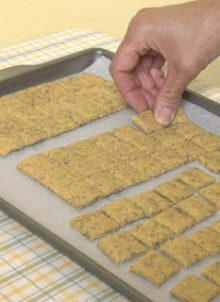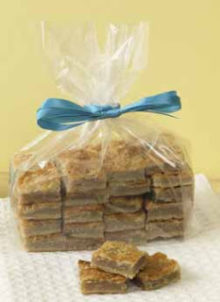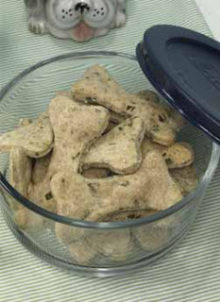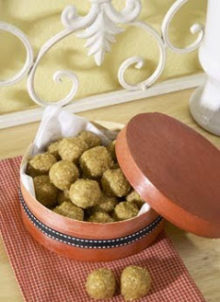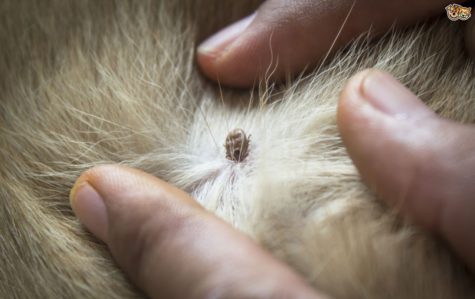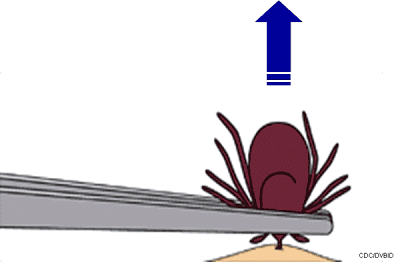Yearly Archives: 2017
Healthy Dog Treats
- 2 cups whole-wheat flour
- 1/2 cup all-purpose flour
- 1/4 cup cornmeal
- 1/4 cup sunflower kernels, finely chopped
- 1 teaspoon salt
- 1/4 cup molasses
- 2 eggs, beaten
- 1/4 cup milk
- 2 tablespoons vegetable oil
Instructions:
Mix all ingredients, adding more milk if needed to make dough firm. Roll out onto a floured surface to a 1/2-inch thickness. Use any shape cookie cutter to cut out biscuits, but bone shapes are fun!
Bake on ungreased baking sheet at 350 degrees for 30 minutes or until lightly toasted. To make biscuits harder, leave in oven with the heat turned off for an hour or more.
Found at: Free Pet Projects
Chompin’ Chicken Bites
- ½ pound ground chicken
- 2 cups all-purpose flour
- 1 cup cornmeal
- ¾ cup low-sodium chicken broth
- 3 tablespoons vegetable oil
- 1 egg
- 1 tablespoon finely chopped tarragon
Instructions:
Preheat oven to 375 degrees. In a non-stick skillet, cook chicken until done; crumble into small pieces and set aside to cool. In a medium bowl, combine flour and cornmeal. In a small bowl, combine chicken broth, vegetable oil, egg, and tarragon; beat until well combined.
Stir wet ingredients into dry ingredients to form a soft dough. Knead chicken into dough. Working with ½ of the dough at a time, press dough into a rectangle and roll out onto parchment paper to ¼-inch thickness. Using a pizza cutter, cut into 1-inch squares.
Move parchment to a baking sheet and bake 20 to 23 minutes or until firm and dry. Cool on baking sheet; break squares apart. Repeat with remaining dough.
Store in an airtight container in refrigerator up to 1 week or in freezer up to 3 months.
Yield: about 15½ dozen bites
Found at Free Pet Projects
Tuna Melt Squares for Dogs and Cats
- 1 (6 ounce) can tuna, in oil
- ¼ cup cottage cheese
- ¾ cup all-purpose flour
- ¼ cup shredded cheddar cheese
- 2 tablespoons Parmesan cheese
Instructions:
Preheat oven to 350 degrees. In a medium bowl, combine tuna and cottage cheese; beat until smooth, about 2 minutes. Add flour and stir until well combined. (Dough will be sticky.)
Use greased hands to pat dough into a lightly greased 8-inch square pan. Sprinkle cheddar cheese and Parmesan cheese on top. Bake 35 minutes or until edges are golden brown.
Cool and cut into 1-inch squares. Store in an airtight container in refrigerator up to 1 week or in freezer up to 3 months.
Yield: forty-nine 1-inch squares
Found at Free Pet Projects
Minty Fresh Dog Biscuits
- 2 cups all-purpose flour
- 1/2 cup whole wheat flour
- 1/4 cup minced fresh parsley
- 3 tablespoons minced fresh mint
- 3/4 cup water
- 2 tablespoons vegetable oil
- 2 tablespoons honey
Instructions:
Preheat oven to 350 degrees.
In a medium bowl, stir together flours, parsley, and mint. In a small bowl, combine water, vegetable oil, and honey. Add wet ingredients to dry ingredients; mix well to form a soft dough.
Working with 1/2 of the dough at a time, roll out on a lightly floured surface to 1/8-inch thickness. Cut out dough with cookie cutters, using desired shapes.
Transfer to a lightly greased baking sheet and bake 20-25 minutes or until lightly browned. Transfer biscuits to a wire rack to cool. Store in an airtight container in refrigerator up to 2 weeks or in freezer up to 3 months.
Yields:
- 2 dozen small biscuits
- 4 dozen large biscuits
Found at Free Pet Projects
Fetch ’Em Peanut Butter Balls
- 1 cup coarsely crushed rice cereal
- ¼ cup smooth peanut butter
- 1 tablespoon honey or molasses
- 2 tablespoons wheat germ
Instructions:
In a small bowl, combine cereal, peanut butter, and honey or molasses; stir until mixture forms a ball.
Scoop out teaspoonfuls of mixture and roll into 1-inch balls.(Balls can be rolled smaller or larger to suit the size of your dog.) Roll balls in wheat germ to cover.
Store in an airtight container in refrigerator up to 2 weeks.
Yield: sixteen 1-inch balls
Found at Free Pet Projects
Cheesy Thumbprint Cookies For Dogs
- 1 cup whole wheat flour
- 2 tablespoons cornmeal
- 2 tablespoons Parmesan cheese
- 6 tablespoons water
- 2 tablespoons olive oil
- 1 egg
- 3 (1 ounce) mozzarella cheese sticks
Instructions:
Preheat oven to 350 degrees. In a medium bowl, combine wheat flour, cornmeal, and Parmesan cheese. In a small bowl, combine water, olive oil, and egg; beat until well combined. Add wet ingredients to dry ingredients; mix until smooth.
Using a tablespoon, scoop out dough and roll into balls. Place balls onto a lightly greased baking sheet. Using your thumb, press a slight indention into center of each cookie. Cut cheese sticks into 6 pieces and place into centers of cookies.
Bake for 20 minutes or until cookies are lightly browned on bottom. Store cookies in refrigerator for up to 2 weeks or in freezer for up to 3 months.
Yield: about 1-½ dozen cookies
Found at Free Pet Projects
17 Common Plants Poisonous to Dogs
- Amaryllis
Common garden plants popular around Easter, Amaryllis species contain toxins that can cause vomiting, depression, diarrhea, abdominal pain, hypersalivation, anorexia and tremors.
- Autumn Crocus
Ingestion of Colchicum autumnale by pets can result in oral irritation, bloody vomiting, diarrhea, shock, multi-organ damage and bone marrow suppression.
- Azalea/Rhododendron
Members of the Rhododenron spp. contain substances known as grayantoxins, which can produce vomiting, drooling, diarrhea, weakness and depression of the central nervous system in animals. Severe azalea poisoning could ultimately lead to coma and death from cardiovascular collapse.
- Castor Bean
The poisonous principle in Ricinus communis is ricin, a highly toxic protein that can produce severe abdominal pain, drooling, vomiting, diarrhea, excessive thirst, weakness and loss of appetite. Severe cases of poisoning can result in dehydration, muscle twitching, tremors, seizures, coma and death.
- Chrysanthemum
These popular blooms are part of the Compositae family, which contain pyrethrins that may produce gastrointestinal upset, including drooling, vomiting and diarrhea, if eaten. In certain cases depression and loss of coordination may also develop if enough of any part of the plant is consumed.
- Cyclamen
Cylamen species contain cyclamine, but the highest concentration of this toxic component is typically located in the root portion of the plant. If consumed, Cylamen can produce significant gastrointestinal irritation, including intense vomiting. Fatalities have also been reported in some cases.
- English Ivy
Also called branching ivy, glacier ivy, needlepoint ivy, sweetheart ivy and California ivy, Hedera helix contains triterpenoid saponins that, should pets ingest, can result in vomiting, abdominal pain, hypersalivation and diarrhea.
- Kalanchoe
This plant contains components that can produce gastrointestinal irritation, as well as those that are toxic to the heart, and can seriously affect cardiac rhythm and rate.
- Lilies
Members of the Lilium spp. are considered to be highly toxic to cats. While the poisonous component has not yet been identified, it is clear that with even ingestion of very small amounts of the plant, severe kidney damage could result.
- Marijuana
Ingestion of Cannabis sativa by companion animals can result in depression of the central nervous system and incoordination, as well as vomiting, diarrhea, drooling, increased heart rate, and even seizures and coma.
- Oleander
All parts of Nerium oleander are considered to be toxic, as they contain cardiac glycosides that have the potential to cause serious effects—including gastrointestinal tract irritation, abnormal heart function, hypothermia and even death.
- Peace Lily (AKA Mauna Loa Peace Lily)
Spathiphyllum contains calcium oxalate crystals that can cause oral irritation, excessive drooling, vomiting, difficulty in swallowing and intense burning and irritation of the mouth, lips and tongue in pets who ingest.
- Pothos
Pothos (both Scindapsus and Epipremnum) belongs to the Araceae family. If chewed or ingested, this popular household plant can cause significant mechanical irritation and swelling of the oral tissues and other parts of the gastrointestinal tract.
- Sago Palm
All parts of Cycas Revoluta are poisonous, but the seeds or “nuts” contain the largest amount of toxin. The ingestion of just one or two seeds can result in very serious effects, which include vomiting, diarrhea, depression, seizures and liver failure.
- Schefflera
Schefflera and Brassaia actinophylla contain calcium oxalate crystals that can cause oral irritation, excessive drooling, vomiting, difficulty in swallowing and intense burning and irritation of the mouth, lips and tongue in pets who ingest.
- Tulip/Narcissus bulbs
The bulb portions of Tulipa/Narcissus spp. contain toxins that can cause intense gastrointestinal irritation, drooling, loss of appetite, depression of the central nervous system, convulsions and cardiac abnormalities.
- Yew
Taxus spp. contains a toxic component known as taxine, which causes central nervous system effects such as trembling, incoordination, and difficulty breathing. It can also cause significant gastrointestinal irritation and cardiac failure, which can result in death.
More Info:
For a more definitive list, complete with pictures, visit the ASPCA Toxic and Non-Toxic Plants List.
This list contains plants that have been reported as having systemic effects on animals and/or intense effects on the gastrointestinal tract.
Please note that the information contained in our plant lists is not meant to be all-inclusive, but rather a compilation of the most frequently encountered plants. If you think that your animal is ill or may have ingested a poisonous substance, contact your local veterinarian or our 24-hour emergency poison hotline directly at 1-888-426-4435.
Spotlight On Bichons
A cheerful, happy dog, the Bichon Frise is small and sturdy with a dark-eyed inquisitive expression and a plumed tail it carries merrily over the back. The breed is often compared to a cotton ball due to its curled double coat, which consists of a textured outer coat and a silky undercoat. The coat must be white, but may have shadings of buff, cream or apricot around the ears or on the body.
- General Appearance
The Bichon Frise is a small, sturdy, white powder puff of a dog whose merry temperament is evidenced by his plumed tail carried jauntily over the back and his dark-eyed inquisitive expression.
- A Look Back
The Bichon Frise appeared in the 13th century as a descendent from the Water Spaniel. Because of their merry disposition, they traveled much and were often used as items of barter by sailors as they moved from continent to continent. The dogs found early success in Spain and it is generally felt that Spanish seamen introduced the breed to the Canary Island of Teneriffe. In the 1300s Italian sailors rediscovered the little dogs on their voyages and are credited with returning them to the Continent, where they became great favorites of Italian nobility. Often, as was the style of the day with dogs in the courts, they were cut “lion style.”
The “Teneriffe” or “Bichon” had success in France during the Renaissance under Francis I (1515-47) but its popularity skyrocketed in the court of Henry III (1574-89). The breed also enjoyed considerable success in Spain as a favorite of the Infantas, and painters of the Spanish school often included them in their works. For example, the famous artist, Goya, included a Bichon in several of his works.
Interest in the breed was renewed during the rule of Napoleon III, but then waned until the late 1800s when it became the “common dog”, running the streets, accompanying the organ grinders of Barbary, leading the blind and doing tricks in circuses and fairs. Although the breed’s colorful past includes use as a circus dog, today the Bichon is enjoyed primarily as a companion animal.
On March 5, 1933 the official standard of the breed was adopted by the Societe Centrale Canine of France. As the breed was known by two names at that time, “Teneriffe” and “Bichon”, the president of the International Canine Federation proposed a name based on the characteristics that the dogs presented – the Bichon Frise. (“Frise” refers to the dog’s soft, curly hair.) On October 18, 1934 the Bichon Frise was admitted to the stud book of the French Kennel Club.
- Right Breed for You?
The Bichon is a naturally gentle, playful dog. He loves activity and requires regular exercise. His hair grows continually and does not shed, so extensive grooming is a must to prevent mats. Bichons also tend to be a good breed for allergy sufferers.
- Temperament
Gentle mannered, sensitive, playful and affectionate. A cheerful attitude is the hallmark of the breed and one should settle for nothing less.
If you are considering purchasing a Bichon Frise puppy, learn more here.
Source: The American Kennel Club, Inc.
Keeping Ticks Off Your Pet Naturally
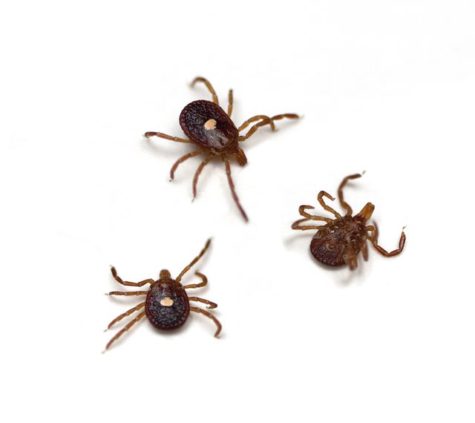 The best way to keep ticks off your pet is to regularly inspect your pet whenever he or she comes in from outdoors, and remove any ticks you might find. Flea combs are ineffective against fleas, but can be used to help remove ticks if you have a short haired dog. Flea combs are not practical for use on large hairy dogs. Wash your pet’s bed frequently. You might also want to take a look at our post on keeping ticks out of your yard.
The best way to keep ticks off your pet is to regularly inspect your pet whenever he or she comes in from outdoors, and remove any ticks you might find. Flea combs are ineffective against fleas, but can be used to help remove ticks if you have a short haired dog. Flea combs are not practical for use on large hairy dogs. Wash your pet’s bed frequently. You might also want to take a look at our post on keeping ticks out of your yard.
Essential oils can be used to repel and in come cases kill ticks (and fleas as well). When choosing an essential oil, be sure to choose 100% pure. Cheaper synthetic versions may have the same aroma, but they will not have the same effect as a pure high grade essential oil.
Important note:
These essential oil solutions should only be used on dogs (or humans). If your dog is elderly, ill, prone to allergies, pregnant, or nursing puppies, please consult your veterinarian before using any of the suggested essential oils. Also, please remember, just because it is safe for a dog, does not mean it is safe for your cat. Do not use any essential oil on a cat without thoroughly researching and making sure it is safe.
Oil Blends:
Aromatherapy oils, like basil, lemon, cinnamon, cedar, lavender, and pennyroyal are the natural repellent for ticks. Mix one drop each of the three oils chosen and pure almond oil. Stir it well, and soak a cloth in it. Wrap this cloth on your pet.
Citrus:
Citrus is abundantly found in oranges and lemon. All you need to do is to prepare natural repellent oil from these citrus fruits. Take out peels of lemon or orange and boil them. Let it cool down naturally. Apply it on the affected area of pets.
You can also add juice of lemon or orange in a cup of water. Allow it to boil for some time. In the solution, add 5-15 drops of lemongrass oil. Shake it well and let it cool down. Apply it gently on the affected area.
Oranges are rich in citric acid which is a natural tick repellent.. Squeeze out some juice from 1-2 oranges. Apply it on pet’s body with the help of a cotton ball. You can also apply some orange oil on the affected area.
Rose Geranium:
One of the most popular tick repellents is rose geranium essential oil. Add 20 drops of rose geranium essential oil in three tablespoons of almond oil. Mix it well and apply a few drops on your pet’s fur, especially around the collar.
Neem Oil:
Neem oil is the most common oil, preferred for discouraging ticks from attaching to your pet. The anti-bacterial and antiseptic properties of neem oil are meant to fight against ticks. All you are required to do is to pour a few drops of neem oil on your palm and gently rub it on.
Dogs with sensitive skin can also be treated with neem oil by diluting it. For diluting, you have to mix neem oil with any light carrier oil, like jojoba or almond oil. Pour a little quantity of mixed oil on palm and rub it gently on pet, covering the affected area.
You can also prepare a spray with the help of organic neem oil. You have to mix ½ ounce of organic neem oil with ½ or ¼ ounce of mild detergent or soap. Stir it well and add this solution to two cups of water. If you want a stronger solution, mix 2 ml soap with two cups of water. Then, add 5 ml neem oil to it. Fill it in a spray bottle and use it immediately.
Neem oil is also helpful in removing ticks from humans. Just apply a few drops of neem oil gently on the skin, especially covering the affected area. You will then need to manually remove the tick.
Note– Use the spray immediately as it can last maximum for 8 hours.
Apple Cider Vinegar
Apple cider vinegar can be a beneficial remedy. You just have to prepare a spray with the help of apple cider vinegar. Pour 8 ounce of apple cider vinegar in a bowl. Add 4 ounce of warm water in it. Stir it well adding half teaspoon each of salt and baking soda. Fill the solution in a spray bottle and shake it well before use.
You can also use apple cider vinegar with lavender oil. Mix 1/4 cup of apple cider vinegar in one cup of water. Add 15 drops of lavender oil in it. Mix it well and apply it on your pet’s fur.
It can also be used with neem oil. Take 500 ml water and add 4 tablespoons of apple cider vinegar to it. Stir the mixture well adding two tablespoons of neem oil. Apply this solution on dogs to kill ticks. You can also spray this mixture on curtains, walls, and carpets.
Witch Hazel
Witch hazel is a natural tick repellent. Instead of using alcohol on pet, use witch hazel. Just mix witch hazel and lemon eucalyptus oil in 10:1 ratio, stir the solution well and fill it in a spray bottle. Spray it on your pet to kill or repel ticks.
You can also prepare a spray by pouring 8 ounce of distilled water in a bottle. Add half teaspoon of vegetable glycerin and 30-40 drops of essential oil in it. Add enough witch hazel to fill the bottle. Shake it well and use to kill ticks and fleas or bugs, present in bed, curtains, mattress, etc.
Lemon Juice
The citrus acid, present in lemon, helps in removing ticks naturally. You just have to use a fresh lemon against ticks. Squeeze out some fresh lemon juice directly on ticks or affected area of pet. (Note: you will still have to remove the tick manually).
You can also prepare a spray with ingredients, like lemon juice, peppermint oil, and citrus oil. Mix all the substances equally and spray it on required places.
You can also prepare a disinfectant solution for bathing your pet, with the help of lemon juice. Squeeze out the juice of lemon in a cup of water. Also add peels and pulp in the water. Put it on simmer for a few hours. Pour this solution in regular bath water.
You can slice a lemon and put it in a bowl of boiling water. Leave it overnight. Dip a sponge in the solution and apply it on troubling area of your pet.
Cedar Oil Spray
To get rid of ticks, use a cedar oil spray. Cedar oil acts as a repellent to harmful ticks. Use cedar oil spray, once in a day. Apply it directly on pet’s ears, collar, and tummy area.
Vegetable Oil
Vegetable oils are rich in sulfur, which acts as a natural repellent for ticks. You have to mix two teaspoons of vegetable oil with 10 drops of peppermint essential oil. Add one teaspoon of dish washing liquid. Stir the mixture well. Apply it on pet’s body. Do not apply near eyes, ears, or mouth. For best results, practice this method once a week.
Garlic
Garlic is a strong repellent for ticks. However, in order to be an effective deterrent, the Garlic must be consumed in sufficient amount. Unfortunately, dogs cannot tolerate raw garlic. Garlic is more toxic than onions and can cause anemia or damage red blood cells in dogs. Cooked garlic can be added to the dog’s food. You can also use garlic powder in place of raw garlic. Simply add 1/8 teaspoon of garlic powder per pound of regular dog food. Be sure to check with your veterinarian before using this method.
Eucalyptus Oil
Eucalyptus oil is very effective against ticks. To prepare eucalyptus spray, boil 15-20 leaves of eucalyptus in approximately 1 litre water. Let it boil for 10 minutes. After boiling, let it cool down at room temperature. Strain the solution in a spray bottle. Use the solution to kill ticks.
You can also make spray by using eucalyptus oil. Fill a spray bottle with 4 ounces of distilled water. Add 10 drops of eucalyptus oil. Shake well before use.
Clove
The anti-inflammatory and anti-bacterial properties of clove help in killing ticks. It has been used for removing ticks and fleas from pets. Pour some clove oil on palm and rub it gently on pet’s fur. A spray can also be prepared with the help of some peppermint oil, clove extracts and water.
Tea Tree Oil
The medicinal properties of tea tree oil help in repelling ticks on pets. Tea tree oil can be used in different ways to discourage ticks. Add a few drops of tea tree oil to your pet’s regular shampoo.
You can add a few drops of tea tree oil to a spray bottle filled with water, and spray it directly on pet’s body. Else, put a few drops of tea tree oil directly on an embedded tick with the help of a dropper. Now, remove the tick with the help of tweezers.
Note: The natural tea tree oil can cause irritation if applied directly to the skin.
Cinnamon Oil
Cinnamon oil works as a natural repellent against ticks and fleas and very useful in getting rid of ticks. All you are required to do is to apply some cinnamon oil directly on the affected area. Be careful to avoid eyes, or sensitive areas.
You can also add 80 drops of cinnamon oil to one ounce of water. Fill the solution in a hose sprayer. Gently spray it in the lawn. This will work against ticks.
Cinnamon oil acts as a protecting shield against ticks on human skin. Just rub cinnamon oil on your skin. Again, be careful to avoid eyes, or sensitive areas.
Source: Home Remedy Shop
Finding And Removing Ticks
The best way to find ticks on your pet is to run your hands over the whole body. Check for ticks every time your pet comes back from an area you know is inhabited by ticks. Ticks attach most frequently around the pet’s head, ears, neck, and feet, but are by no means restricted to those areas.
If you find an embedded tick, do not simply grab its body and pull, as the tick’s barbed hypostome (feeding tube) may break off and remain in the bite. Applying chemicals or flame to the tick is not a good idea because, while it may make the tick let go, it can also cause the tick to spit blood back into the wound, possibly sending disease germs into the bloodstream in the process.
The best way to remove a tick is to use rubbing alcohol and a pair of hemostats or sharp tweezers. Dab rubbing alcohol on the tick, and then use the hemostats or tweezers to take hold of the tick as close to the dog’s skin as you can; pull slowly and steadily. Try to grab it where its mouth-parts enter the skin and pull gently without letting go. It will eventually releases its hold by withdrawing its barbed mouth-part from the skin.
Try not to leave the tick’s head embedded in the dog’s skin. Do not apply hot matches, petroleum jelly, turpentine, nail polish, or just rubbing alcohol alone because these methods do not remove the ticks and they are not safe for your pet.
Once you have removed a tick, do not try to crush it – unengorged ticks are flat and very hard to crush, while engorged ticks will burst and release blood. Instead, you should flush the tick down a drain or seal it in a jar. (It can be useful to keep the tick to show to a doctor in case you or your pet gets sick from the bite.) Some people kill and preserve ticks by dropping them into bottles of rubbing alcohol; if you do this, do not use the alcohol in that bottle for anything else.
After you pull a tick off, there will be a local area of inflammation that could look red, crusty, or scabby. The tick’s attachment causes irritation. The site can get infected; if the pet is scratching at it, it is more apt to get infected. A mild antibiotic, such as over-the-counter triple antibiotic ointment can help, but usually is not necessary. The inflammation should go down within a week. If it stays crusty and inflamed longer than a week, it might have become infected.
Although ticks can transmit diseases, they are usually nothing more than a nuisance. The best approach is to prevent them from embedding, and once embedded, to remove them quickly. As long as you stay on top of the situation, your pets should cruise right through the tick season with no problems.
sources: Veterinary Partner and Regional Pest Management

